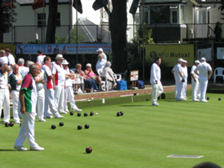Bowls Date Stamp
Recognise the date stamp on
your bowls
World Bowls Ltd. have in their regulations Section 8.2.2 the
following - "To check the accuracy of the bias and visibility of
the World Bowls stamp, all bowls should be re-tested and re-stamped
at least once every 10 years, or earlier if the date stamp is not
clearly legible".
So it is important that you know what the stamp on your set of
bowls indicates.
If you have a set of bowls manufactured or re-tested after 1st.
April 2002 then your stamp should look like the picture below. Note
however that the letter will be that relevant to the manufacturer
or tester and that the 10 years includes the year of stamping /
re-stamping.
World Bowls Ltd date stamp -
This is the 'new' current (2013) World Bowls Ltd.
registered stamp that was brought into force when all the testing
facilities had the same test surface, same delivery mechanism and
the modern Working Reference Bowl.
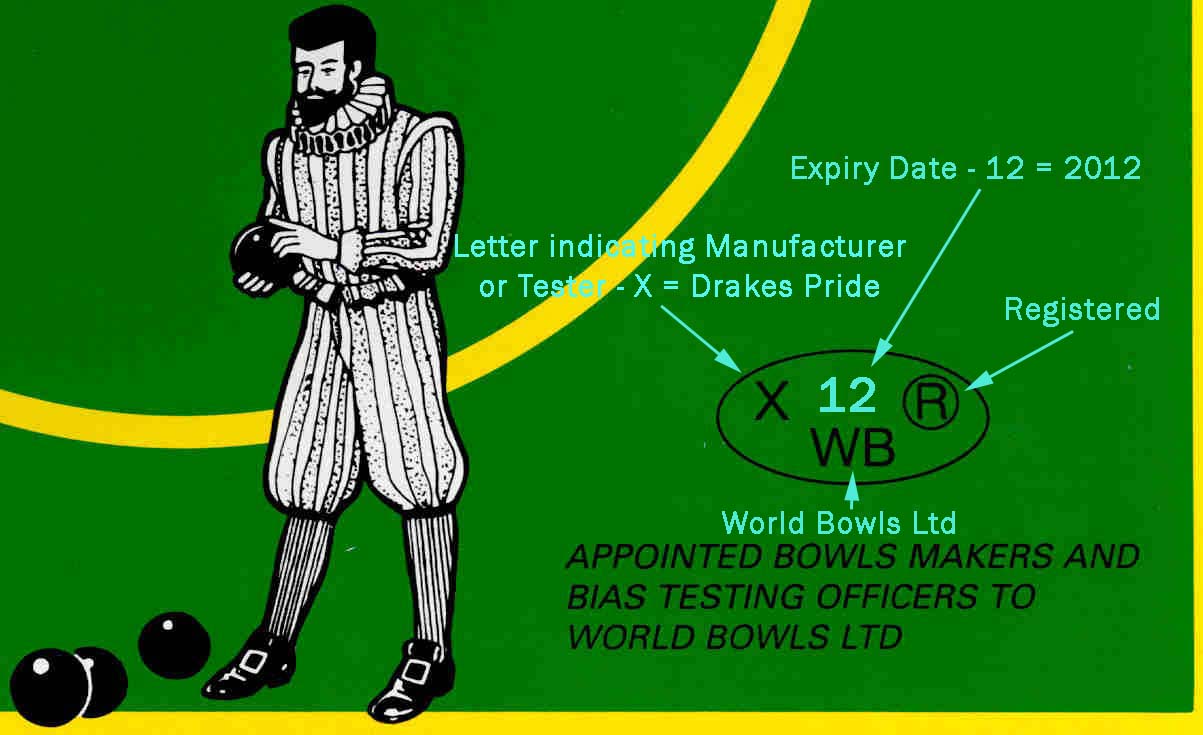
World Bowls Board date stamp -
Prior to the WB stamp was the Worlds Bowl Board stamp, commonly
know as the 'bullet' stamp. This stamp was used from 1993 when the
International Bowling Board was renamed and updated to the World
Bowls Board. The information shown is basically the same as the
current stamp.
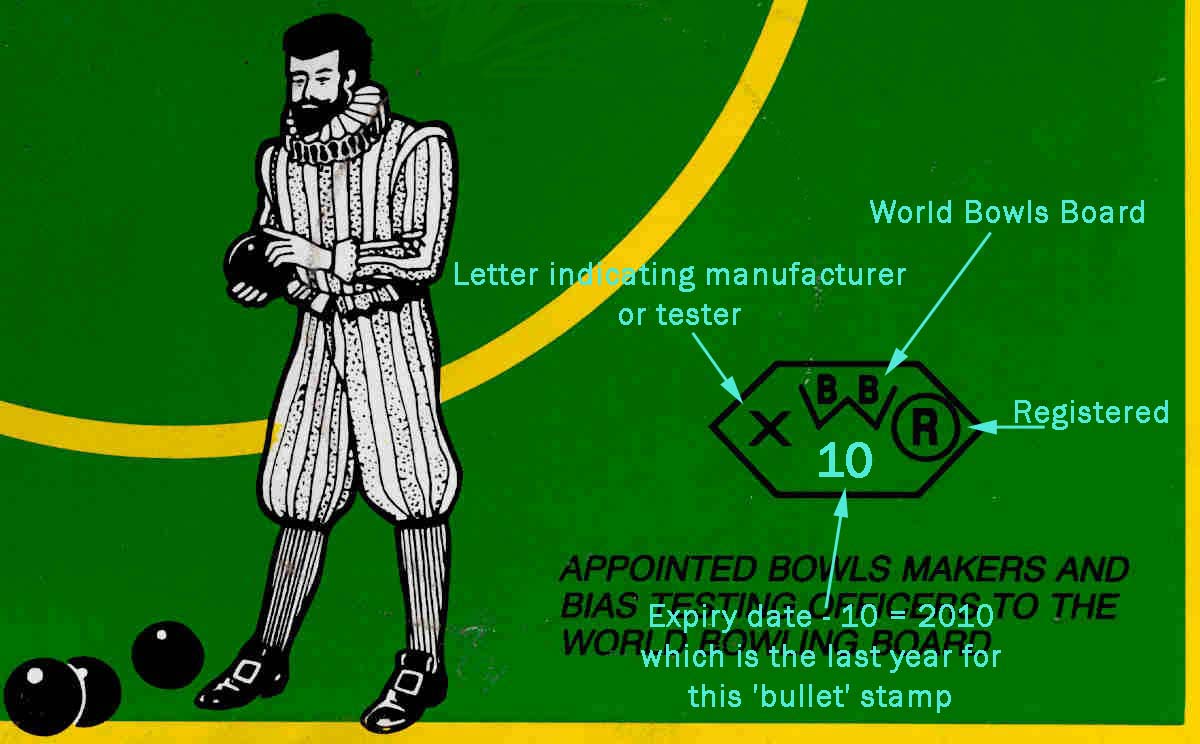
International Bowling Board date stamp
In 1986 after much discussion a new Reference Bowl was issued to
all manufacturers and tester and the IBB stamp became the accept
date stamp through out the bowls World replacing local National
stamps such as the BIBC (British Isles Bowling Council) stamped
used on bowls in the UK.
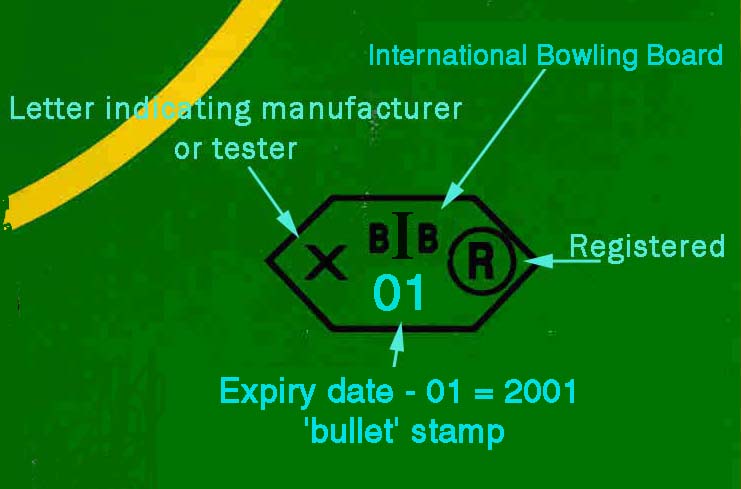
Prior to 1987 and the introduction of the IBB registered
'bullet' stamp the two stamps that were in use in the UK were the
original IBB oval stamp and the BIBC stamp. In the UK the BIBC
stamp tended to be the more common of the two. In Australia the
Australian Bowls Council stamp was the recognised stamp, New
Zealand had a NZBA stamp and South Afric a SABA stamp these
National stamps were superceded after 1987 by the
IBB 'bullet' stamp.
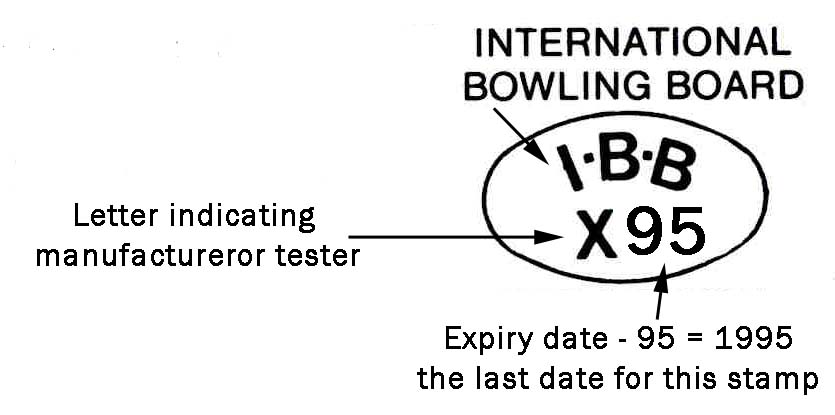
British Isles Bowling Council date stamp
The BIBC stamp was significantly different to the IBB stamp then
in use and the subsequent stamps in that it was for a 15 year
period.
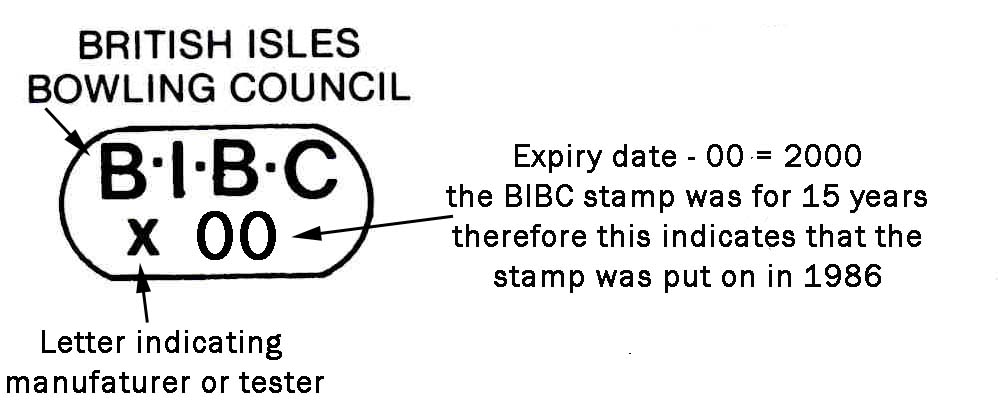
The date stamp shows when you should have your bowls re-tested
and given that when a bowl is rolling on a green, outdoor or
indoor, it is basically running on fine sandpaper they do need this
inspection. After all you want to bowl to the best of your ability
so don't you want to be sure that your bowls are performing as they
did when new.
For the full list of Manufacturers and Testers 'Letters' see
your National hand books, a full listing is usually included.
Some additional information discovered after a question raised
in January 2006 from Australia about testing and stamping and the
introduction of the I.B.B. stamp in the UK. The following pictures
are taken from the 1926/7 E.J. Riley catalogue and the 1935
Taylor-Rolph catalogue.
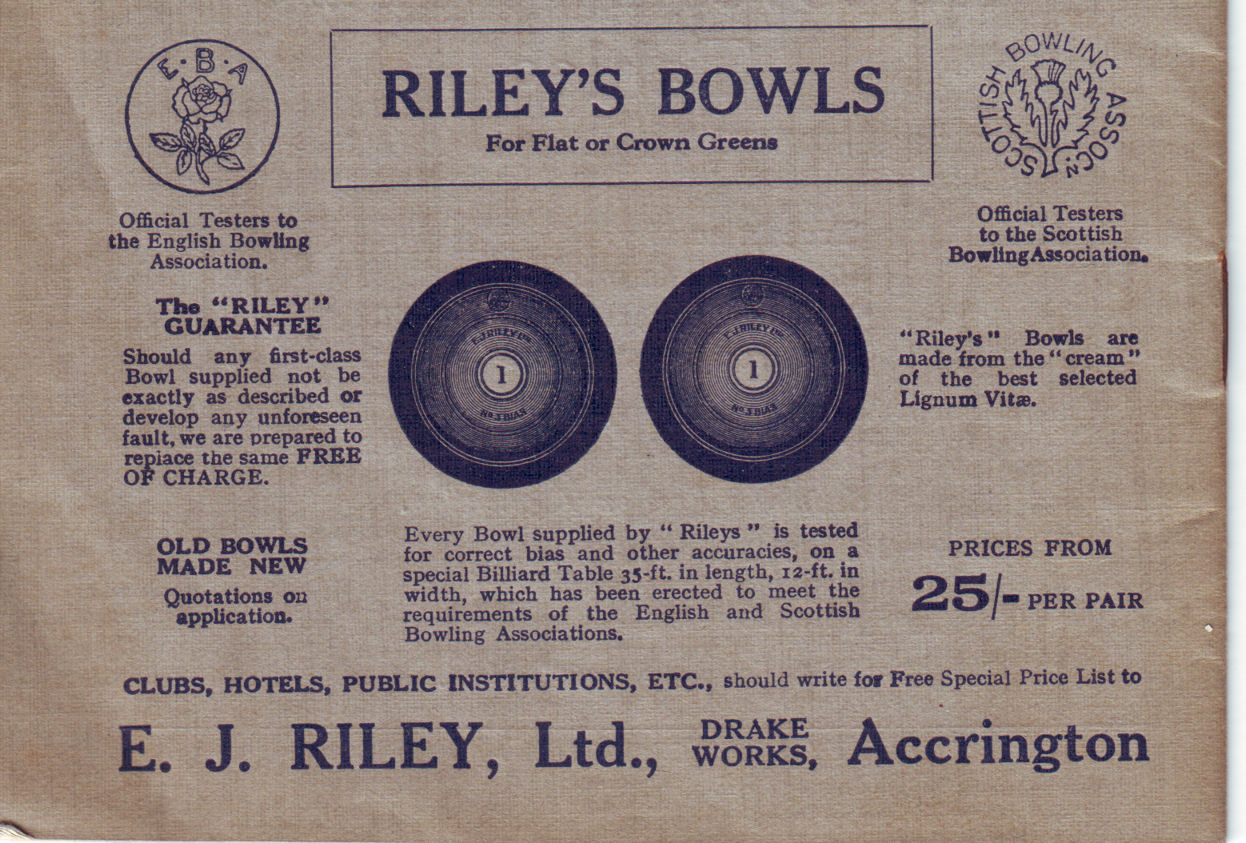
The E.J. Riley page (1926/27 season) shows both the E.B.A. And
S.B.A. marks and no mention of an I.B.B. mark.
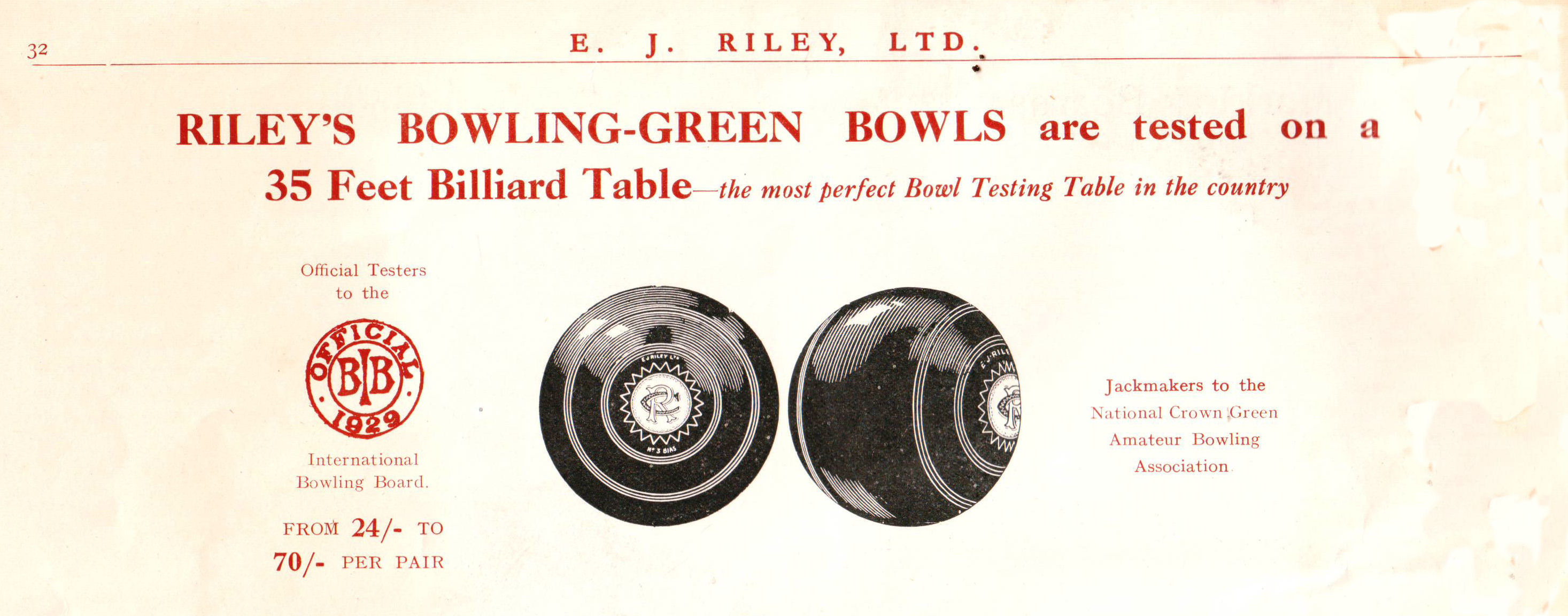
The above picture is from a
catalogue dated 1929-30 season and shows the I.B.B. mark with the
year shown as 1929. Which seems to be strong evidence to the year
the mark was first introduced.
You will see that within the Taylor
Rolph pages from their 1935 catalogue, it mentions the 'new'
International Bowling Board 'mark', which implies that it had no
long be introduced. So, I believe, from the above evidence it is
safe to assume that the I.B.B. mark can be dated to 1929
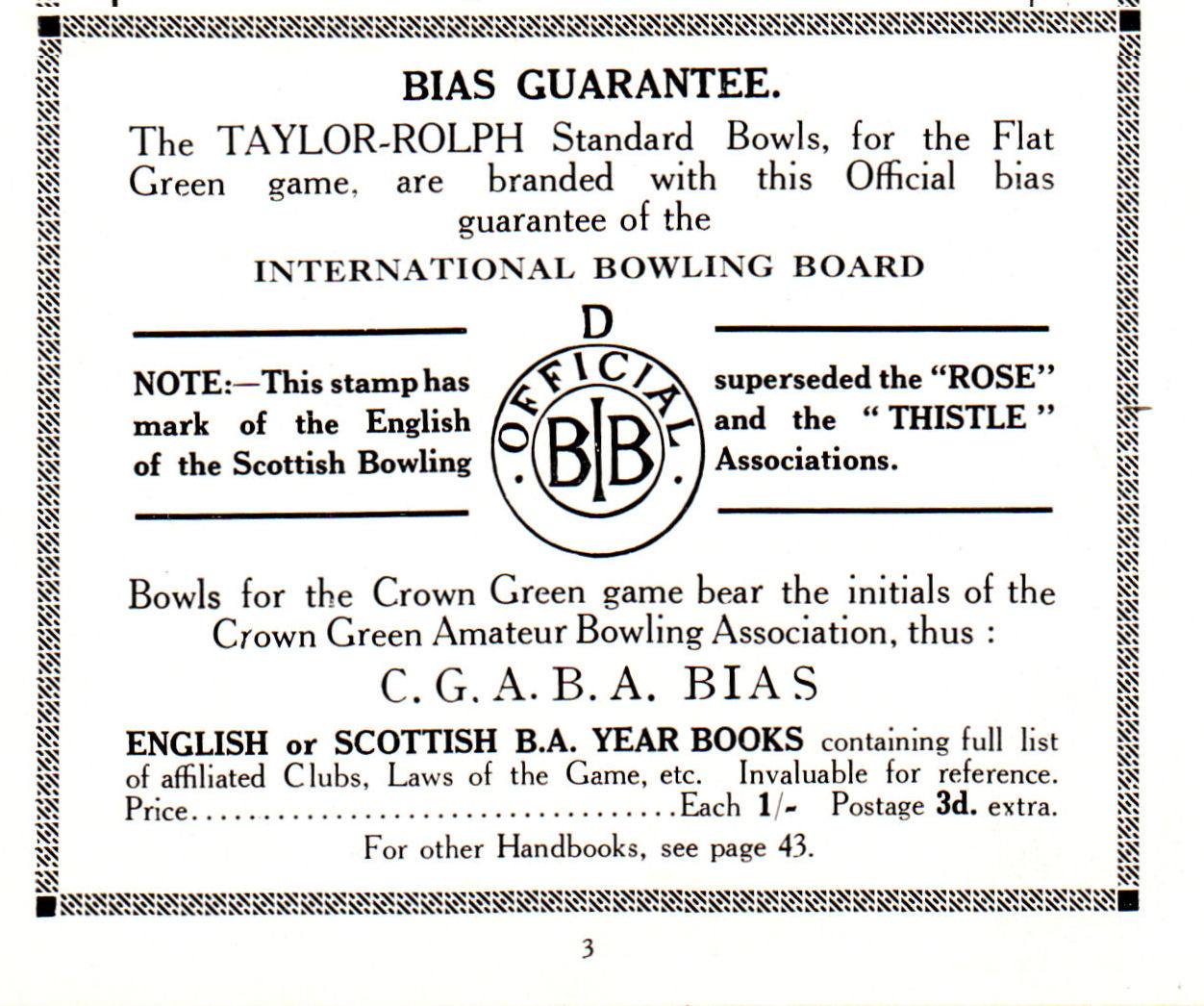
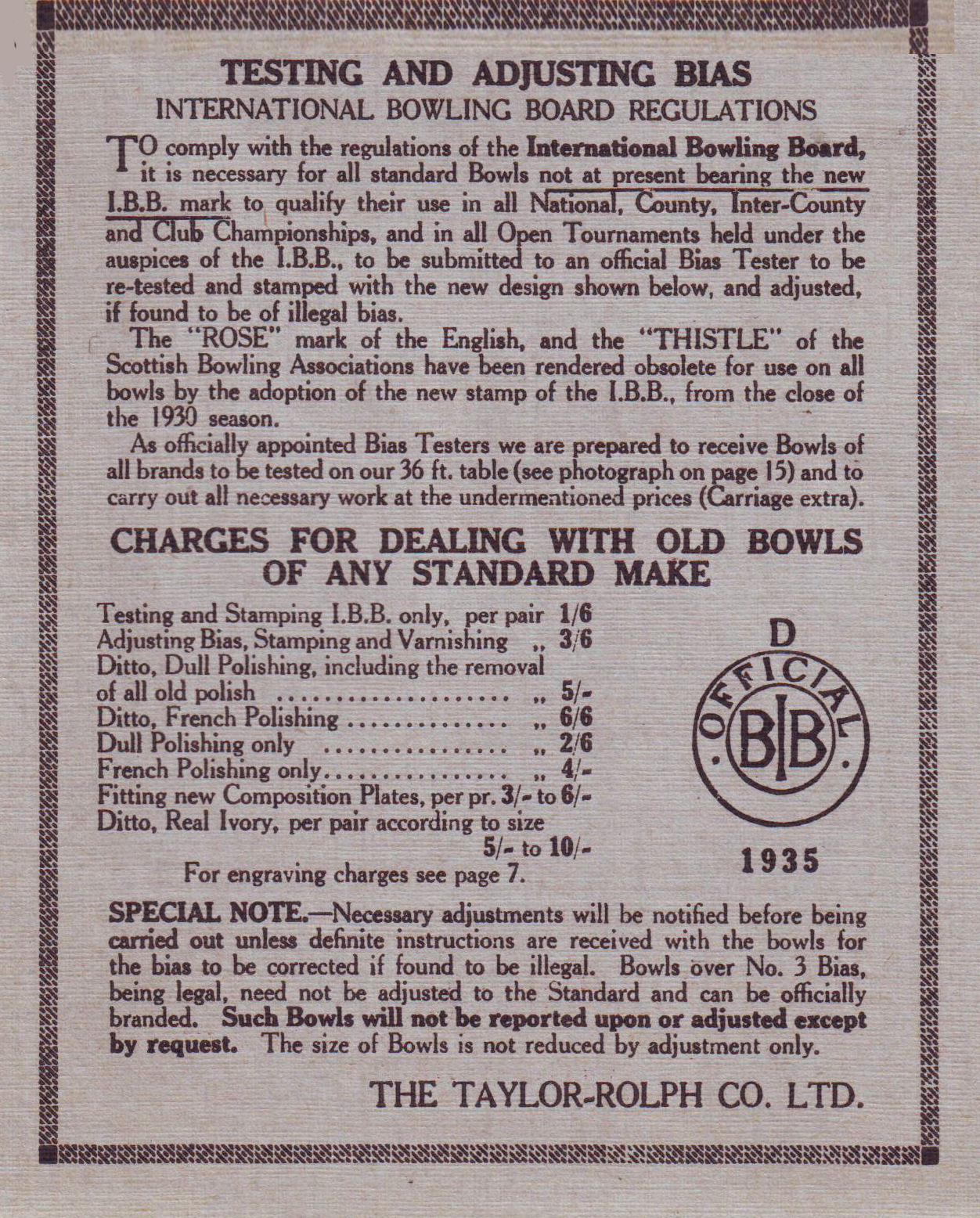
© Peter N. Clare © 2003-2006-2009 ©
E.A. Clare & Son Ltd. 2018.
This article can only be reproduced in part or whole with the
permission of E. A. Clare & Son Ltd.
